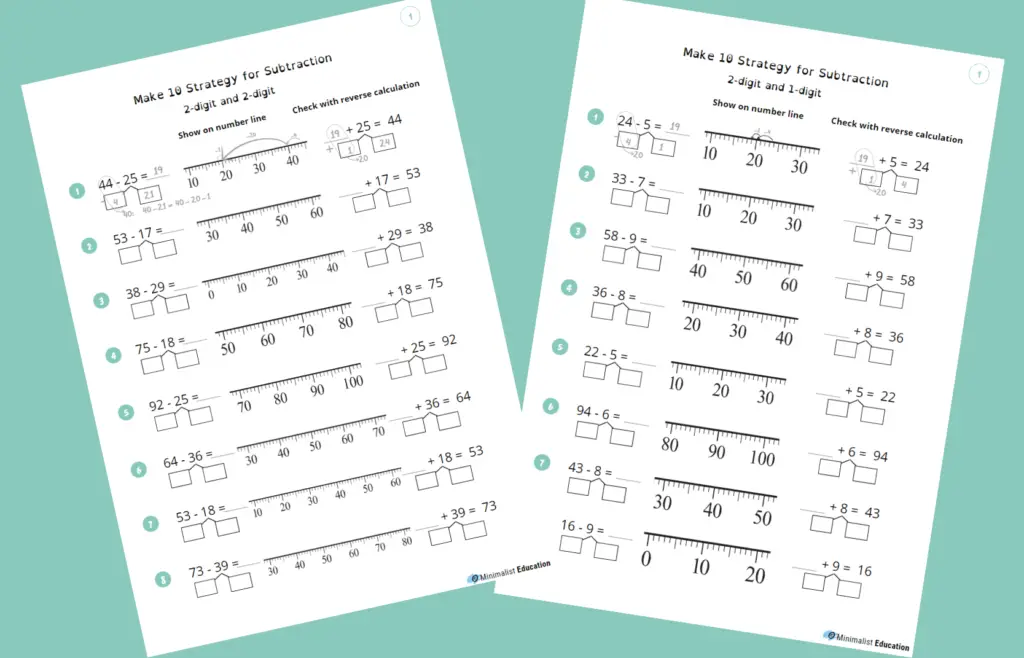How To Use the ‘Make-10’ Strategy for Subtracting Bigger numbers

When should you use the ‘Make 10’ strategy for subtracting?
When the number being subtracted has to cross a ten of the number it is being subtracted from.
Take a look at the following examples:
19 – 3, 26 – 14, 73 – 52.
looking at the units of each sum, 9 – 3 and 6-4 and 3 – 2 are know number facts so no need to do anything other than use the known number facts to take away the units, then take away the 10s.
However, looking at the next examples:
32 – 5, 73 – 27
These can’t be answered by using the usual number facts that are memorised. Looking at the units of each sum, 2 – 5 and 3- 7 aren’t number bonds that are memorised.
For all three of these equations, when subtracting you will have to cross a 10.
In these instances, it is super useful to use the ‘make 10’ strategy.
So let’s have a look and see how to do that.
In the first example, 32 – 5. A 10 will have to be crossed because 32 – 5 will definitely be less than 30. First split the 5 to take away a 2 from 32 as this will result in a number that is a multiple of 10 (32-2=30). There is still 3 left to subtract (after taking 2 away from the 5). 3 is then subtracted from the 30 using known number bonds of 10. As 10 – 3 = 7, 30 – 3 will equal 27.
While it may seem easier to just count back 5 from 32 when taking away, this strategy really speeds up efficiency when applying this method to bigger numbers.
Consider the next example 73 – 27. First split the 27 to take away a 3 from the 73 as this will result in a number that is a multiple of 10 (73 – 3 = 70). There is still 24 left to subtract (after taking the 3 away from 27). 24 is then subtracted from the 70 using known number facts of 10. As 10 – 4 = 6, 70 – 4 =66. Finally take away the twenty: 66 – 20 = 46.
Using the ‘Make 10’ method might seem unnecessarily convoluted when first coming across it. Initially, it is a strategy that is difficult to apply. However with practice, the process will greatly speed up. It is absolutely worth taking the time to learn how to use it well as mentally adding and subtracting larger numbers becomes very slow without it. The make-10 strategy also reinforces the concept of place value and number bonds which are vital maths concepts to cement early on.
I have made a worksheet to practice this concept, including number lines for students to be able to understand and visualise what they are doing. For each subtraction calculation, students will also have to do the reverse addition fact to check their answer is correct. There is one page for practicing subtracting 1-digit from 2-digit numbers, and a second page for practicing subtracting 2-digit from 2-digit numbers.
I have also made two copies of each worksheet so this skill can be practiced again as homework or the following week.
Answers included.
I hope this helps some of you out!
Leave a Reply